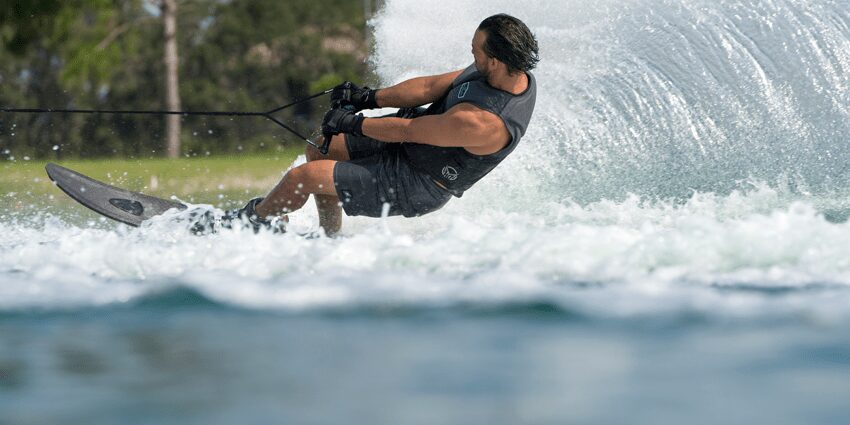
Waterskiing is an adventure sport that combines skiing and surfing in which skiers, holding on to a rope, glide over the water pulled by motorboats that sail at a speed of more than 50 kilometers per hour. Ralph Samuel invented it in 1922 although it became truly popular in the 50s of the last century, when the main advances in the material appeared such as wetsuits and the most powerful boats.
This sport manages to strengthen the whole body, with special emphasis on the extremities and requires good reflexes and balance. It was an exhibition sport in the 1972 Munich Olympics and it has different modalities: classic skiing, divided into four submodalities, slalom, figures, jumps and combined; water skiing on board, also with its disciplines, wakeskate (skateboarding) and wakesur (surfing); racing and barefoot skiing.
In the latter, the skier moves without skis although shoe skis can be used, which are much shorter than conventional skis or a type of circular cymbal that is around one meter in diameter.
With respect to classic skiing, in slalom, the boat moves in a straight line through the center of a track on which there are a series of buoys that the athlete must zigzag while going increasing speed. In the jump, for his part, he passes with two skis down a fiberglass ramp. For the figures, only a wider ski is used and the aim is to perform the greatest number of stunts in 20 seconds each way and as many back. To finish, the combined unites the three previous types.
Benefits
- Creates adherence: As it is an activity with numerous variations, it favors the habit of sports.
- Releases tensions: It requires concentration on activity and physical effort, which favors the release of tensions from the body and mind.
- Increase strength: Its regular practice improves the strength of the arms and legs that make an extraordinary effort but also the core and its toning is essential to maintain balance.
- Improves reflexes: Attention, changes in direction and the aquatic environment intensify alertness and help improve reflexes.
- Increases balance: This is one of its main benefits since standing upright on a board while moving improves overall balance and coordination.
Risks
- Shoulder dislocations, epicondylitis and thumb dislocations are some of the most common injuries in the practice of this sport, in the upper extremities. The speed and tension with which it is practiced means that cervical contractures and whiplash can also occur. Regarding the lower body, knee ailments are the most common.
The modalities on board are those that, like snowboard, are done on a single board instead of traditional skis. In addition to the elements to slide, the necessary equipment includes a life jacket and the palonnier, that is, the handle and the braided nylon rope that the skier clings to. The use of a helmet, gloves or wetsuit is also optional.










